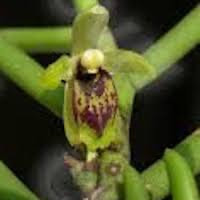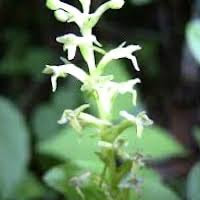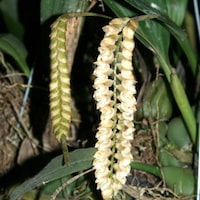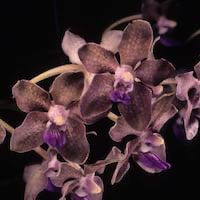MFR3- Men's Fresh 3 - I beg your parsley?
|
Native Singaporean Orchid notes: Catasetum Roseum
Catasetum roseum is an orchid native to the oak and tropical deciduous forests of Michoacán and Oaxaca in Mexico, growing at elevations of 500 to 1300 meters. This small to medium-sized epiphyte blooms in early winter, producing a 12 cm racemose inflorescence with multiple fragrant, campanulate-shaped flowers. While not native to Singapore, it is popular worldwide for its beauty and scent, thanks to methyl cinnamate, which gives it a captivating fragrance.
|
Therapeutic Orchid notes:
|
Luisia hancockii Rolfe
The orchid Luisia hancockii, known as Xianyechaizigu or Qianyechaizigu in Chinese, meaning "slim leaf hairpin," is native to certain regions where it grows as an epiphyte on trees in sparse woods. It has a cylindrical shape and grows in a monopodial pattern. In traditional herbal medicine from Zhejiang Province, the entire plant is used to clear gas and phlegm, remove |
|
Platanthera ussuriensis (Regel) Maxim. syn. Tulotis ussuriensis (Regel) Hara
Tombo-so, or Platanthera ussuriensis, also known as Xiaohuaqingting Lan in Chinese and Tombo-so in Japanese, is an orchid native to regions in China like Jilin and Zhejiang. In traditional medicine, its root is used to remove toxins, treat swellings, abscesses, inflammation, and thrush. The plant is also valued for its sweet-smelling flowers and fragrant leaves, which contain compounds like methyl benzoate and quercetin. |
|
Pholidota imbricata Hook. f.
The Necklace Orchid, or Pholidota imbricata, known as Subaoshixiantao in Chinese, Syalamba in Nepal, and the Necklace Orchid in Sri Lanka, is found on trees and rocks across China, Sri Lanka, Southeast Asia, and New Guinea. This orchid has medicinal uses in traditional practices: crushed roots help relieve fever, a poultice aids childbirth and menstrual flow, and the plant treats ulcers, rheumatic pain, and fractures. Its phytochemicals, including imbricatin, have bacteriostatic properties. |
|
Vanda tessellata (Roxb.) Hook. ex G. Don Vanda roxburghii R. Br.
Vanda tessellata, also known as Zanjabeel-e-shami, Anuradhapura Orchid, and Rasna, is a hardy, lowland orchid native to Sri Lanka, India, Nepal, and Myanmar. This orchid thrives in a wide range of light conditions and temperatures. In traditional medicine, it is used to treat rheumatism, dyspepsia, and scorpion stings, and its extracts show anti-inflammatory effects. Its strong fragrance, due to compounds like linalool and methyl benzoate, is also valued in herbal remedies. |
Other scent note
Scentopia Library Reference ingredient
111- HayHay - Check details at Scentopia's scent library
Download the guided mediation that works best with this Orchid fragrance oil
| men_fresh_essential_oil_orchi_00003.mp3 | |
| File Size: | 171492 kb |
| File Type: | mp3 |




